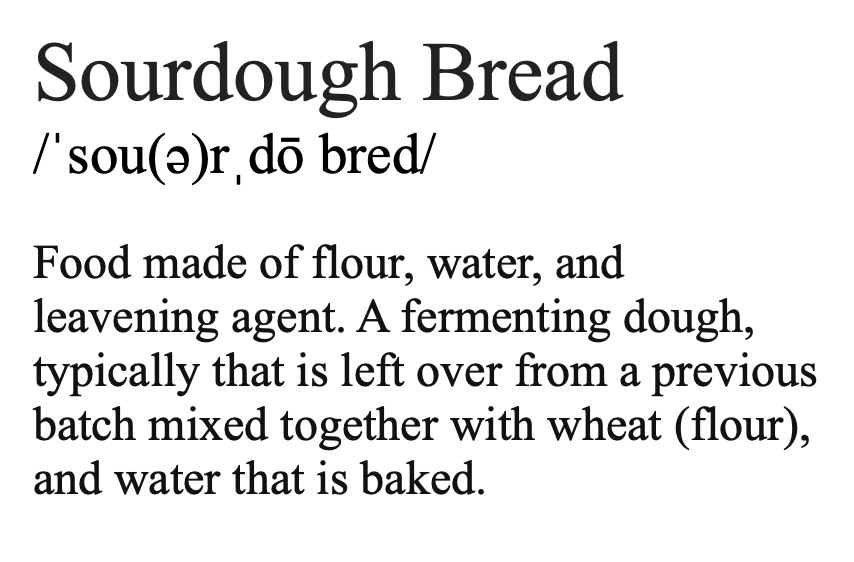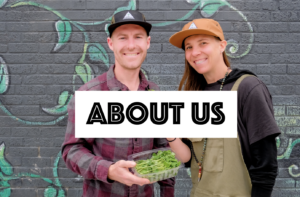
How to make Sourdough bread and the benefits
Sourdough bread – (ˈsou(ə)rˌdō bred) – Food made of flour, water, and leavening agent. A fermenting dough, typically that is left over from a previous batch mixed together with wheat (flour), and water that is baked.
Leav-en: a substance (such as yeast) used to produce fermentation in dough or a liquid especially : sourdough
Everyone has heard of sourdough bread but not many people are aware of why sourdough is potentially better than most breads we consume. Since I have started making sourdough bread not only do I feel a sense of accomplishment that I no longer need to purchase bread from the store but my wife and I indulge on the most delicious fresh breads every week. Once you learn some basics you can try new variations with new ingredients and ratios of flour but any bread sourdough is, to me, automatically better.
Even with the basic definition above, most people don’t really understand the basic differences between breads made with standard commercial bakers yeast and sourdough. Most bread you consume on a daily basis from pizza dough, buns, pastas, bread loafs and pastries are all made with commercial bakers yeast. If you have never made bread before this is the active ingredient that gives rise and airiness to your bread. You can purchase it at the store but it is not inexpensive if you are purchasing it regularly so it is one of the reasons it falls short to sourdough bread. You can find active yeast but this is essentially alive and must be refrigerated. Scientists figured out how to dry the yeast in the granular form which puts the yeast essentially to sleep in a dormant state which gives it the ability to last for weeks, even months on a store shelf without going bad. When you are ready to use it you essentially rehydrate it in your dough mix to “reactivate” it.
Sourdough bread is made with a sourdough starter. The starter can be made at home or you could get a piece of a baker friend’s starter. When making a sourdough starter, equal parts flour and water are mixed together daily and left on the counter to start its magic. Everywhere around us there are natural yeasts in the air. Your starter will acquire some of the natural yeasts from the air making your own unique starter. This is one of the reasons why sourdough breads are so unique in different areas of the globe. Once you have your sourdough starter, you have a new friend that you must aptly name. Once you have a starter, if you take care of it it can literally last you a lifetime. If you are like most people who bake once a week or less, you can store your starter in the fridge as it helps it store longer and not require daily feedings as it would if left out on the counter at room temperature. Due to the method in which it is made sourdough has a few health benefits that make it a more delicious and healthy choice.
When you make sourdough, instead of using bakers yeast, you use a portion of your sourdough starter to create the leaven you use to bake with. Wild yeasts in the starter interact with lactic acid bacteria present in the grain as well as fermenting the sugars creating gas as a by-product giving rise to the bread and your starter. The lactic acid bacteria is also present in foods like yogurt, pickles, sauerkraut and kimchi and is considered a beneficial prebiotic which could aid in a healthier gut function. The Prebiotics are non digestible fibers that feed beneficial bacteria in your gut. The sourdough fermentation process also helps to break down gluten in the bread which makes it easier to digest especially with people with gluten sensitivities.
Sourdough is also considered to be more “healthy” than other bread options due to a cool biological process that happens to phytic acid. Whole grain breads contain a good amount of minerals, including potassium, phosphate, magnesium and zinc. Unfortunately, the absorption of these minerals is limited by the presence of phytic acid, which is commonly referred to as phytate. Phytates are considered antinutrients because they bind to minerals, reducing your body’s ability to absorb them. Interestingly, the lactic acid bacteria found in sourdough bread lower the bread’s pH, which helps degrade phytates. This results in a bread that has a much lower phytate content than other types of bread. *One study showed that sourdough fermentation may reduce the phytate content of bread by 24–50% more than conventional yeast fermentation. Lower phytate levels increase mineral absorption, which is one of the ways in which sourdough bread is more nutritious than conventional bread. Moreover, studies show that the lactic acid bacteria present in sourdough bread have the ability to release antioxidants during sourdough fermentation!
The last benefit I will mention is Sourdough bread may have less of an effect on blood sugar and insulin levels than other types of bread, though the reason for this isn’t yet fully understood. Researchers believe that sourdough fermentation may modify the structure of carb molecules. This reduces the bread’s glycemic index (GI) and slows down the speed at which sugars enter the bloodstream The GI is a measure of how a food affects blood sugar. Foods with a lower GI are less likely to produce a spike in blood sugar levels. In addition, the lactic acid bacteria found in the dough produce organic acids during fermentation. Some researchers believe these acids may help delay stomach emptying and prevent a spike in blood sugar in a way similar to vinegar.
Did you know that sourdough had this many benefits beyond tasting damn good? Now that you are all fixed on sourdough, you dont necessarily want to run to your local market because some of today’s store bought sourdoughs don’t use the same traditional fermentation process leading it to have less health benefits. Also checkout this video about what the oldest people in the world consume and wouldn’t you know that oldest family consumes a daily dose of sourdough, sardinian minestrone soup, greens and a glass of wine! Now if that doesn’t get you fired up to make some bread I don’t know what will. If you want to start making your own sourdough, check out our blog on How to make a traditional sourdough loaf which will take you through the process.
